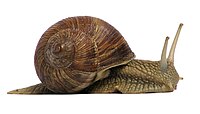
Photo from wikipedia
The noble scallop Chlamys nobilis is an economically important marine bivalve cultivated in the southern sea of China since the 1980s. Unfortunately, mass mortality of this scallop species often occurs… Click to show full abstract
The noble scallop Chlamys nobilis is an economically important marine bivalve cultivated in the southern sea of China since the 1980s. Unfortunately, mass mortality of this scallop species often occurs in summer. The present study was conducted to investigate whether the expression of heat shock protein 90 (HSP90) and level of carotenoids could enhance high-temperature stress resistance in scallop. First, the HSP90 homolog of C. nobilis (designated CnHSP90) was identified and cloned. The complete cDNA sequence of CnHSP90 was 2631 bp, including a 2181-bp open reading frame (ORF) encoding a 726 amino acid polypeptide with five HSP90 family signatures, and sharing high homology with members of the HSP90 family. CnHSP90 was ubiquitously expressed in all examined tissues including the intestine, kidney, adductor, mantle, gill, and gonad, with the highest in the gonad. Golden and brown scallops, which contain significantly different total carotenoid content (TCC), were subjected to acute thermal challenge, and the LTE50 (semi-lethal temperature at 36 h heat shock) and LTI50 (semi-lethal time after heat shock) as well as the correlation between CnHSP90 gene expression and TCC were determined. The LTE50 of golden scallop (32.14 °C) was higher than that of brown scallops (31.19 °C), with longer LTI50 at all tested temperatures, indicating that golden scallops were more resistant to thermal stress than brown scallops. Similarly, the mRNA expression levels of CnHSP90 in gill of golden scallops were significantly higher (P < 0.05) than that of brown scallops at 6, 12, 24, and 36 h, with a strong positive correlation between CnHSP90 expression level and TCC. This suggests that both carotenoids and HSP90 levels could improve thermal resistance in the noble scallops.
Journal Title: Cell Stress and Chaperones
Year Published: 2019
Link to full text (if available)
Share on Social Media: Sign Up to like & get
recommendations!